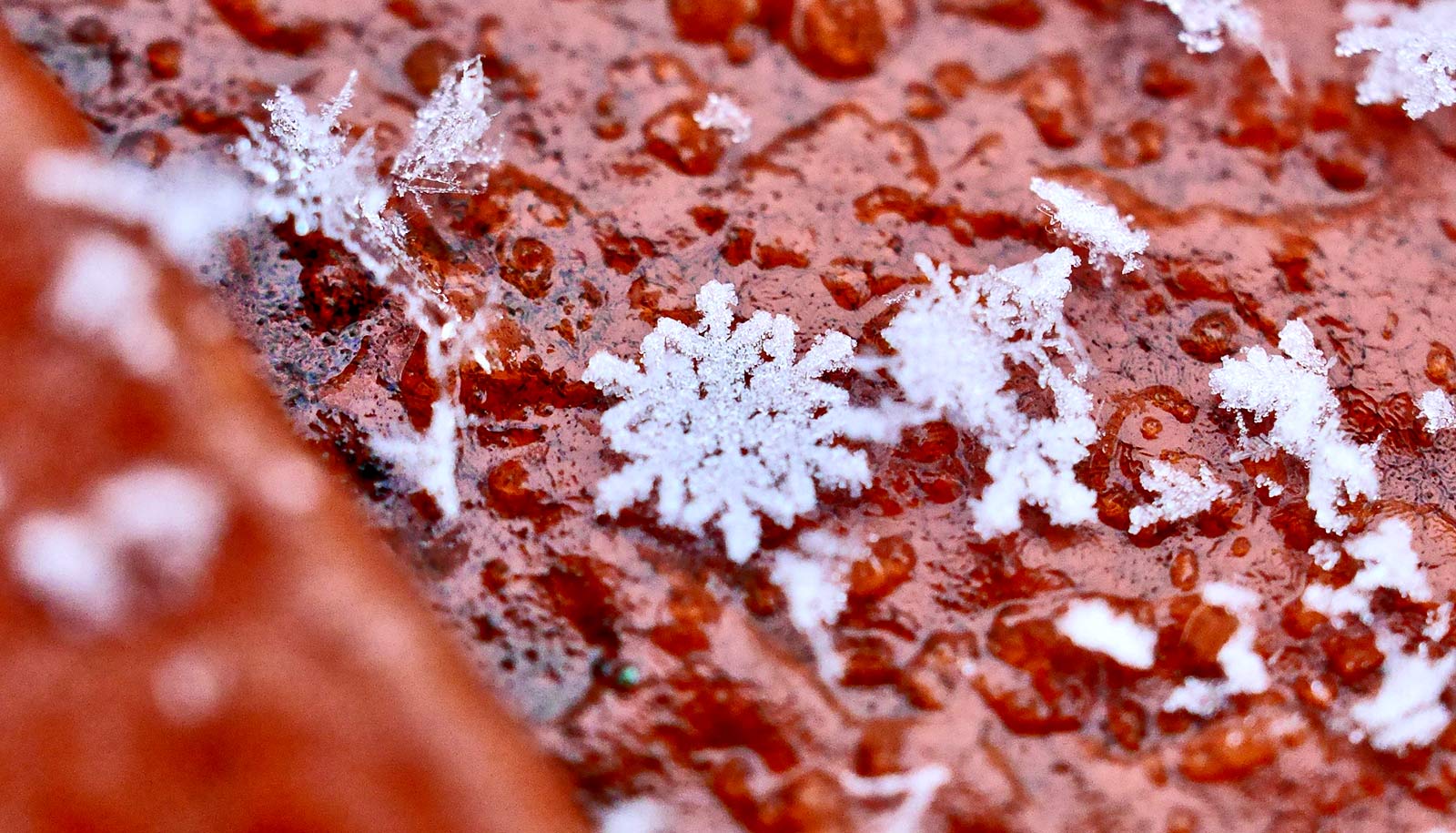The snow may be melting, but it is leaving pollution behind in the form of micro- and nano-plastics, according to a new study.
As reported in the journal Environmental Pollution, the pollution is largely due to the relatively soluble plastics found in antifreeze products (polyethylene glycols) that can become airborne and picked up by the snow.
The researchers used a new technique that they developed to analyze snow samples from Montreal in April 2019 for both micro- and nano-sized particles of various plastics.
The technique is orders of magnitude more sensitive than any of the other current methods used for tracing plastic in the environment. It allows scientists to detect ultra-trace quantities of many of the most common soluble and insoluble plastics in snow, water, rainfall, and even in soil samples once they have been separated—down to the level of a picogram (or one trillionth of a gram). It is based on using nano-structured mass spectrometry and, unlike other techniques currently in use, the new technique is both recyclable and based on sustainable practices.
“It is important to be able to detect even trace quantities of plastics in the environment,” says senior author Parisa Ariya of McGill University’s departments of chemistry and atmospheric and oceanic sciences. “Though these plastics may be harmless in themselves, they can pick up toxic organic matter and heavy metals from the environment, which can damage human cells and organs.”
The first author Zi Wang, a PhD Candidate at McGill adds, “Our hope is that this new technique can be used by scientists in different domains gain key information about the quantity of micro- and nano-plastics in urban environments in order to better address their impacts on the ecosystem and on human health.”
Funding for the research came from the Natural Science and Engineering Research Council of Canada (NSERC), the National Research Council Canada (NRC), and Environment of Climate Change Canada (ECCC).
Source: McGill University



